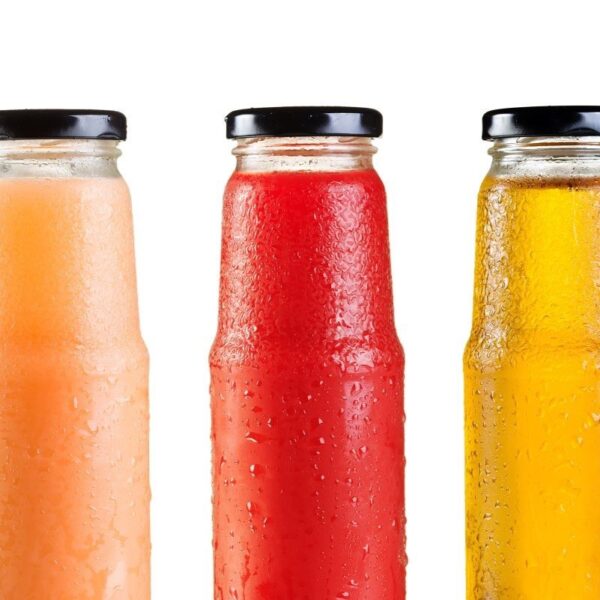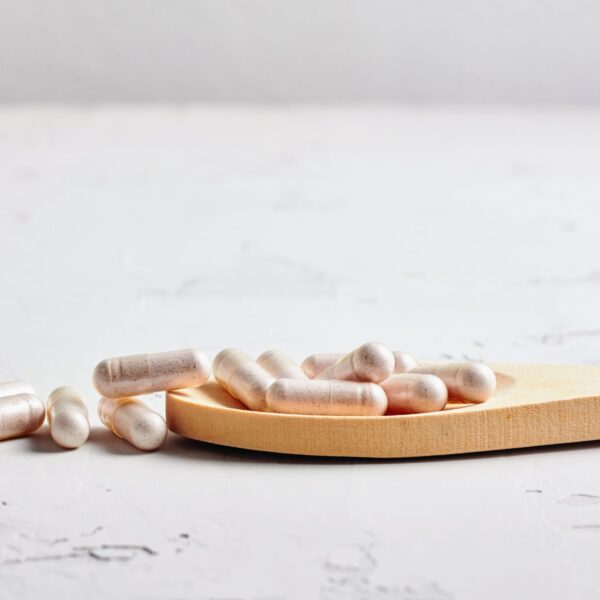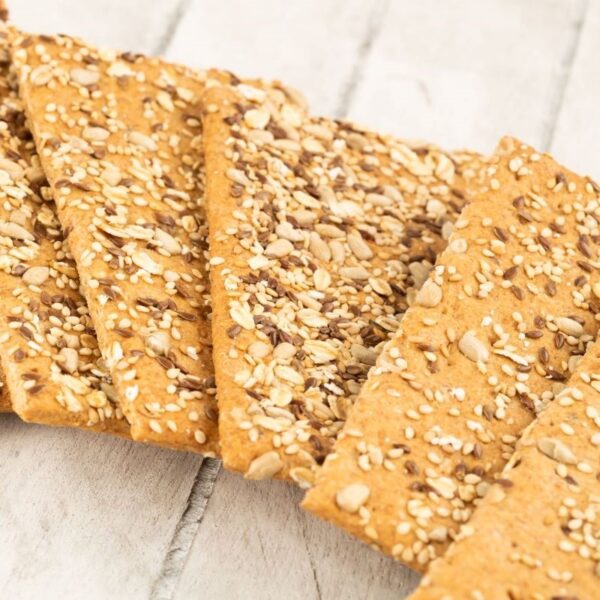Glucono-delta-lactone (GDL) is a neutral cyclic ester of gluconic acid. It’s commonly used as a food additive, particularly in bakery and meat products. This article provides insights into glucono delta-lactone, including its properties, usage in the food industry, formulation considerations, and regulatory information.
What is Glucono-Delta-Lactone?
Glucono-delta-lactone, also known as gluconolactone, is a naturally occurring substance that is a component of many connective tissues. Upon addition to water, GDL is partially hydrolyzed to gluconic acid. Its properties make it ideal for use as a sequestrant, acidifier, and leavening agent. Pure GDL is a white, odorless crystalline powder.

Glucono delta-lactone chemical structure. Source: Wikipedia
How is Glucono-Delta-Lactone Produced?
Glucono-delta-lactone occurs naturally in plants, fruits, wine (up to 0.5%), honey (up to 1%), and many fermented products. As a natural food acid, it lowers the pH of food products and helps preserve them.
GDL can be commercially produced in the following three ways:
- Oxidation of D-glucose with bromine water
- Fermentative production by non-pathogenic and non-toxicogenic bacteria
- Oxidation of D-glucose with enzymes
During these processes, GDL is produced with gluconic acid, which can be separated by direct crystallization from the aqueous solution.
Applications in the Food Industry
Glucono delta-lactone has multiple uses in the food industry, performing various functions as a food additive.
| Function | Applications |
| Coagulant | |
| Acidulant | Processed Meats |
| Leavening Agent | Refrigerated or Frozen Dough, Quick Bread, Premium Baked Goods |
| Sequestrant | |
| Curing Agent | Cured Meats |
| Pickling Agent | Sauerkraut, Pickled Cucumbers and Peppers |
| pH Control Agent |
Product Examples
| Type | Examples |
| Baked Goods | Refrigerated or Frozen Dough, Quick Bread, Premium Baked Goods |
| Meats | Processed Meats, Cured Meats |
Properties of Glucono Delta-Lactone
| Physical Form | Fine, white, crystalline powder |
| Color | White |
| Odor | Odorless |
| Melting Point | 150-154°C |
| Molecular Weight | 178.140 g·mol−1 |
| Taste | Mildly sweet |
| pH | 3-4 (gradual over 60 minutes) |
| Density | 1.610 g/cc |
| Solubility | Soluble in water |
Typical Formulations
Sourdough
GDL is used in sourdough formulations as an acidulant and raising agent. Here is an example of a formulation of sourdough with glucono delta-lactone, along with the % weight of ingredients.
| Ingredient | % Composition |
| Sovereign® Flour | 100 |
| Water | 52 |
| Fermipan® Red Yeast | 0.8 |
| Sugar | 1.5 |
| Salt | 2 |
| Ascorbic Acid | 25 ppm |
| Fermizyme® P200 Amylase | 60 ppm |
| Fermizyme® H400 Hemicellulase | 150 ppm |
Source: European Patent Office
Mozzarella Cheese
GDL was used in the production of mozzarella cheese as per the following formulation.
| Ingredient | % Composition |
| Buffalo Milk | 100 |
| Yogurt Starter Culture (Streptococcus saliverus ssp. thermophilus and L. delbrueckii ssp. Bulgaricus) | 0.25 |
| GDL | 0.37 |
| Liquid Calf Rennet | (0.03% v/w) 30 ml/ 100 kg |
Source: Research Gate
Glucono Delta-Lactone Formulation Considerations
| Physical Forms | White crystalline powder |
| Stability and Shelf Life | Because GDL is an acidulant, it reduces the pH of the formulation and thus can prevent microbial growth and stabilize products. The prolonged acidulation of food products extends shelf life without altering the product’s sensory properties. In one study, the usage of GDL in dry meat sausages during fermentation induced a reduction in pH in the samples. It affected the formation of biogenic amines as well as the growth of some bacteria throughout fermentation. |
| Sensory Attributes | GDL is available in the market as fine white crystals, which are odorless and impart a mild and slightly sweet flavor. During conversion to gluconic acid, GDL becomes only slightly tart or acidic (about 33% of the sourness of citric acid). GDL’s taste profile and mild acidity well-suits beverage and bakery formulations where the intense sour taste imparted by other acidulants (such as malic acid or citric acid) is undesirable. It gradually affects the sensory profile when added to the products, even at higher concentrations. GDL stimulates the NO2 reaction with hemoglobin of meat at a level of little dosage as 0.1 to 0.2%, creating the red color of stable cured meat products. The addition of GDL to processed meat not only helps in controlling the pH but also enhances the ripening and curing process. |
| Dosage | The typical dosage ranges from 0.5-4%, although these may differ in specialized applications. |
| Effects on pH | The ring-shaped molecule of glucono delta-lactone opens up when in contact with water, so it hydrolyzes gluconic acid slowly. A freshly prepared 1% aqueous solution has a pH of 3.6, changing to pH 2.5 within 2 hrs. This weak organic acid has a low neutralizing value (45 grams of sodium bicarbonate neutralized by 100 g of the acid), implying that higher amounts of GDL are required to neutralize the baking soda completely and release optimum amounts of gas. The conversion of GDL to gluconic acid is accelerated by temperature. Therefore, the leavening action of GDL in doughs is maximized upon the elevation of oven temperature, which is a desirable quality in bakery formulations. It is especially essential in the case of preformulated doughs, bread premixes, etc. For instant usage, GDL can be dissolved in warm water beforehand. |
| Interaction with Other Components | GDL has been extensively used as a coagulant in milk and tofu. GDL can replace lactic acid bacteria in some varieties of cheese, including cottage cheese and feta mozzarella. Acidification with GDL has been shown to result in a milk coagulum compared to sudden acidification with HCL, which produces clustered casein micelles. GDL also acts as a gelling agent in acid-induced gels made from emulsion with higher protein concentrations. GDL breaks down into gluconic acid, which acts as a raising agent when used with baking powder in bakery formulations. |
| Source | Glucono-delta-lactone occurs naturally in plants, fruits, wine (up to 0.5%), honey (up to 1%), and many fermented products. As a natural food acid, it lowers the pH of food products and also helps in preservation. GDL can also be commercially produced. |
| Biological Activity | From a nutritional standpoint, GDL is considered a carbohydrate and is completely metabolized in the body. It provides 4 Cal/g. It also provides chelating activity against metal ions and free radical scavenging. |
Comparison with Other Acidulants
Compared with other acidulants, GDL has an advantage in terms of the following properties:
- Fine-tuned CO2 release
- Slower acidification
- Lower tartness
- No undesirable effect on sensory properties even at higher concentrations
- Improved color stability
- Chelating and antioxidant activity
- Reproducible pH adjustments (compared to microbial acidification)
The use of GDL may be restricted due to its higher cost compared to other readily available organic or inorganic acidulants. The following table compares typical properties of GDL and other commonly used acidulants.
| Acetic Acid | Citric Acid | Lactic Acid | Glucono Delta-Lactone | |
| Ionization Constant | 1.76 x 10-5 at 25 °C | K1=7.10 *10-4 | 1.374 x 10-4 at 25° C | 1.99 x 10-4 (for gluconic acid) |
| K2= 1.68*10-5 | ||||
| K3=6.4*10-7 at 25 °C | ||||
| pKa | 4.75 | 3.14 | 3.86 | 3.7 |
| 4.77 | ||||
| 6.39 | ||||
| Melting Point (°C) | -8.5 | Anhydrous, 153 Hydrous, 135-153 | 16.8 | 153 |
| Solubility (g/100ml water) | Soluble | 181 g at 25°C 208 g at 25°C | Very soluble | 59 g at 25°C |
Source: NIH
Safety & Regulatory Considerations
| FDA Information | GDL has been approved as a food additive. The FDA has affirmed that glucono delta-lactone is generally recognized as safe (GRAS) as a direct human food ingredient. It can be used as a curing and pickling agent, leavening agent, pH control agent, and sequestrant in food with no limitation other than current good manufacturing practice. |
| EU Information | GDL has been approved as a food additive by the European Food Safety Authority (EFSA). |
Safety & Toxicity of Glucono Delta-Lactone
Although generally regarded as very safe and effective, minor side effects have been reported, including bladder irritation or back pain.
Identification Numbers
| CAS Number | 90-80-2 |
| E Number | E 575 |
| EC Number | 202-016-5 |
Dosage Recommendations
The dosage of GDL depends on multiple factors not limited to the desired pH reduction. The typical dosage ranges from 0.5-4%, although these may differ in specialized applications. The suggested dosages for multiple applications are summarized in the following table.
| Application | Suggested Dose Rate |
| Cured Meat Products | 0.50% |
| Restructured Meat Products | Not greater than 0.3% |
| Salami | 1.00% |
| Chemically Leavened Bakery Products | GDL at 4.25% with 2% sodium bicarbonate |
| Tofu | 0.3 – 0.4% |
| Pickled Products | Up to 65% of the vinegar |
| Cheese | 12% GDL on a milk solids basis |
| Canned Fruit and Vegetables | Up to 1% |
| Salad Dressing | Replace up to 10% of the vinegar |
Fun Facts About Glucono Delta-Lactone
- Glucono delta-lactone is found in many plant gums.
- The yeast Saccharomyces bulderi can be used to ferment gluconolactone to ethanol and carbon dioxide.
Additional Resources
- Effects of Acidification on Structures of Zein-Caseinate Nanocomplexes Self-Assembled During a pH Cycle (ResearchGate)
- The Influence of GDL Concentration on Milk pH Change During Acid Coagulation (ResearchGate)
- New Ways for Beverage Formulators to Reduce Bitterness and Balance Sourness (Silo.tips)
- Production Technology for Adding GDL (Glucono Delta Lactone) to Soy-Based Foods (ResearchGate)
- Glucono Delta Lactone Side Effects (FoodSweeteners.com)





